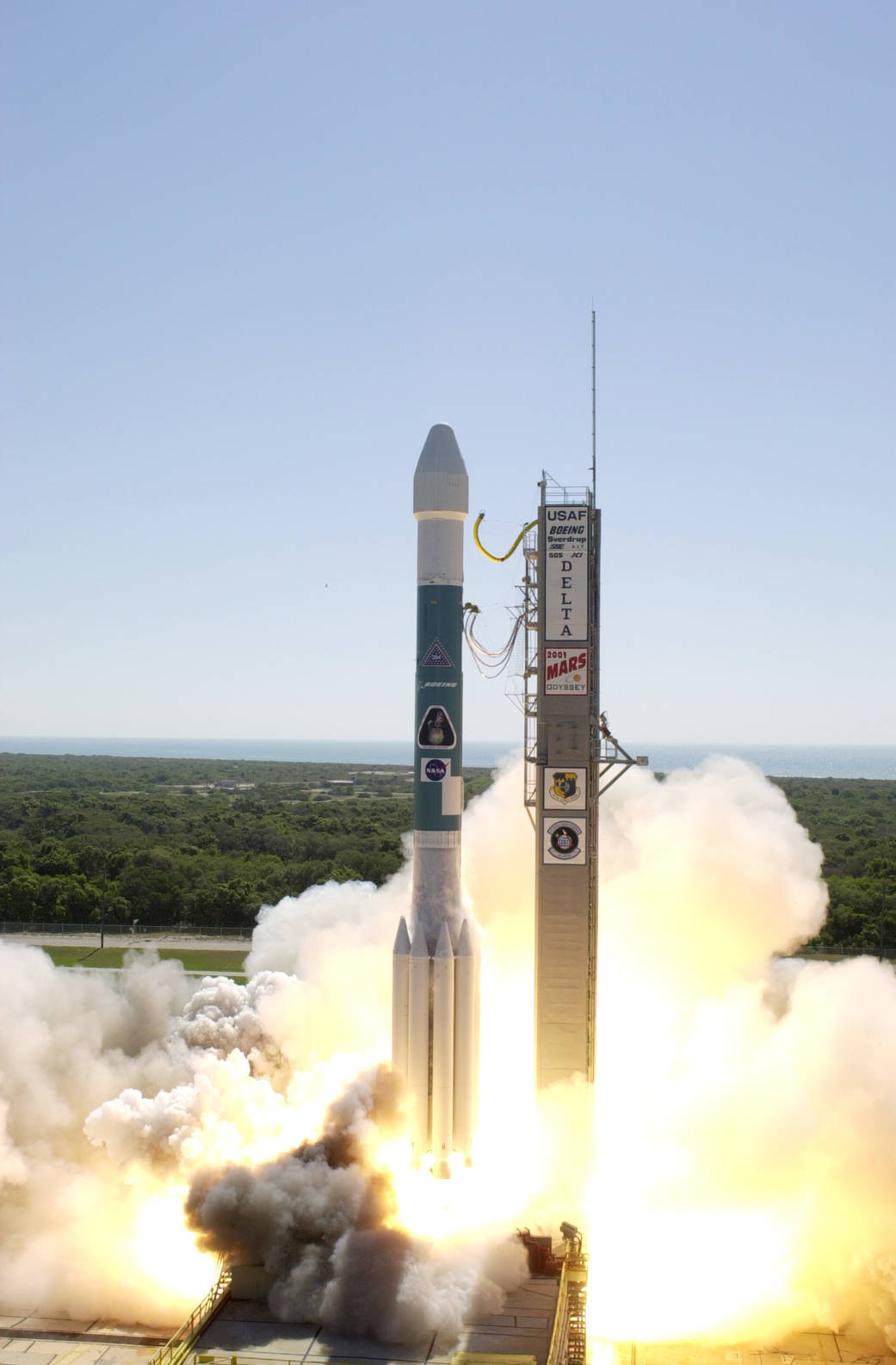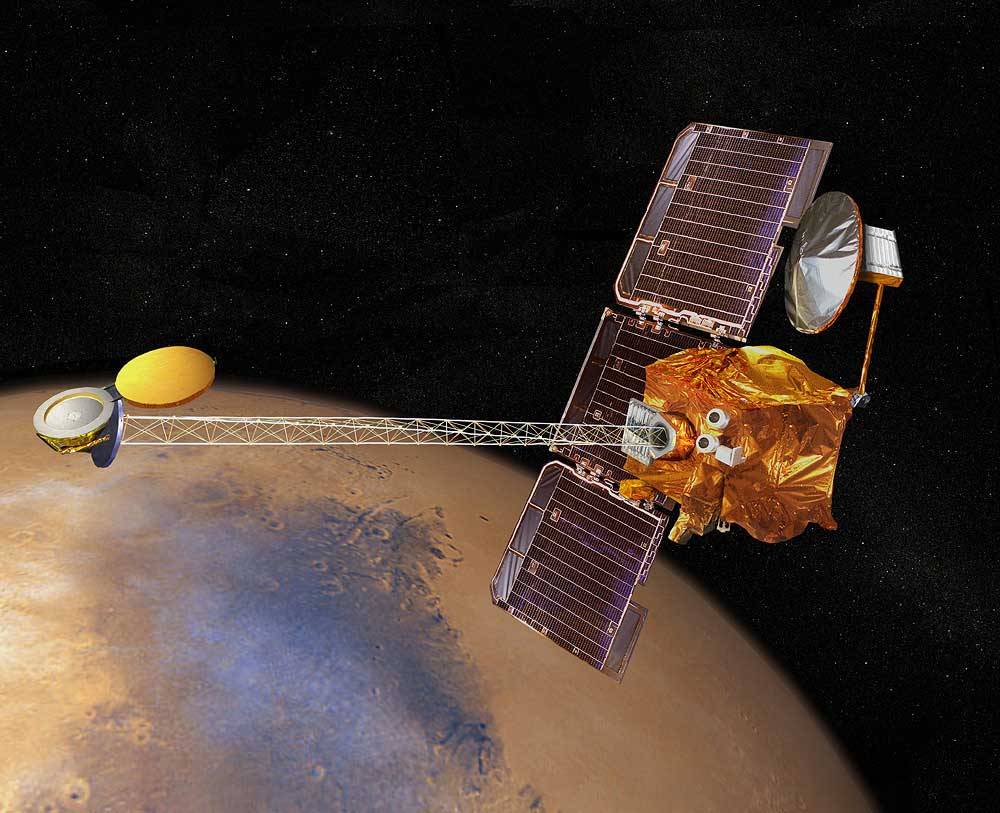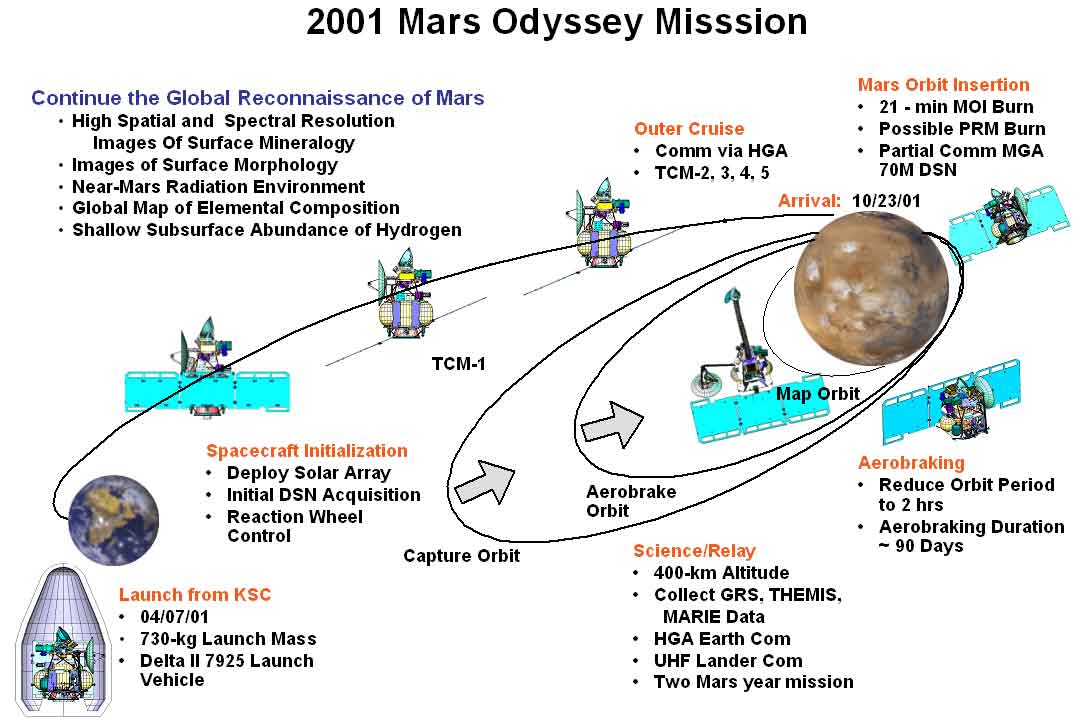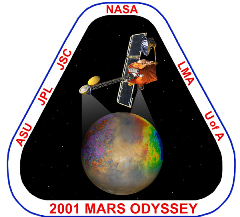A ‘2001 Space Odyssey’ To Map Mars
NASA’s ‘Energizer’ Mars Orbiter
The 2001 Mars Odyssey mission, launched on April 7, 2001, is NASA's longest-serving spacecraft in operation at Mars. The mission’s primary science objective was to compile the first map of the density and composition of chemical elements and minerals that make up the Martian surface. The orbiter's extended operations to perform data relay services continue even today.
2001 Mars Odyssey Fast Summary Facts
- Type: Orbiter
- Destination: Mars
- Status: Ongoing (2001 - )
- Launch Location: Cape Canaveral, Florida
- Launch Date: April 7th 2001
- Arrival Date: October 24th 2001
- Mission Duration: 6 ½ month cruise, > 16 years in service
Interesting Fun Facts About The 2001 Mars Odyssey Mission!
- The spacecraft’s name, 2001 Mars Odyssey, was named after the renowned science fiction works of Arthur C. Clarke and Stanley Kubrick, which involves a futuristic space exploration journey to Jupiter!
- The mission's science objectives were to produce the first global map of Mars, identifying the composition (chemical elements and minerals) of the Martian surface.
- The total cost of the 2001 Mars Odyssey is estimated to be around $297 million USD.
- At launch, the Odyssey spacecraft weighed 758 kilograms (1,671 lb) and was launched aboard a Delta II rocket.
- The probe utilizes three large solar panels for power generation.
- To help circularize Odyssey’s orbit, the spacecraft used aerobraking (where the probe dips into the thin upper atmosphere to slightly slow the spacecraft via friction) which preserved nearly 200 kilograms of rocket propellant.
- Odyssey’s mapping orbit was a near-polar sun-synchronous orbit at an altitude of 400 kilometres (240 miles) to maximize coverage of the planet.
- One of Odyssey’s discoveries was that the radiation levels in low-Mars orbit are twice that which spacecraft in low-Earth orbit experience. This is critical information for any long duration deep space missions to Mars.
- The maps that Odyssey produced led scientists to discover vast amounts of water-ice are hidden just beneath the surface in the polar regions of Mars. This information will be critical for future human missions.
- Since completing its primary science mission at the end of 2004, Odyssey is now primarily an orbiting communications relay satellite for other NASA spacecraft on Mars’ surface. These include Mars rovers Spirit, Opportunity, the Phoenix lander and the Curiosity.
- The Mars Odyssey spacecraft has collected and sent back more than 130,000 images.
- At the completion of the primary science mission, NASA moved the spacecraft into a higher orbit of 3,785 kilometres (2,352 miles) for longevity and a better data relay service.
- The 2001 Mars Odyssey is NASA’s longest-serving spacecraft at Mars with over 16 years of service since its arrival in 2001. The spacecraft also has enough propellant to keep operating possibly until 2025 - so will keep breaking records for some time yet!



Mars Bound
Mars Odyssey
Mars Odyssey



